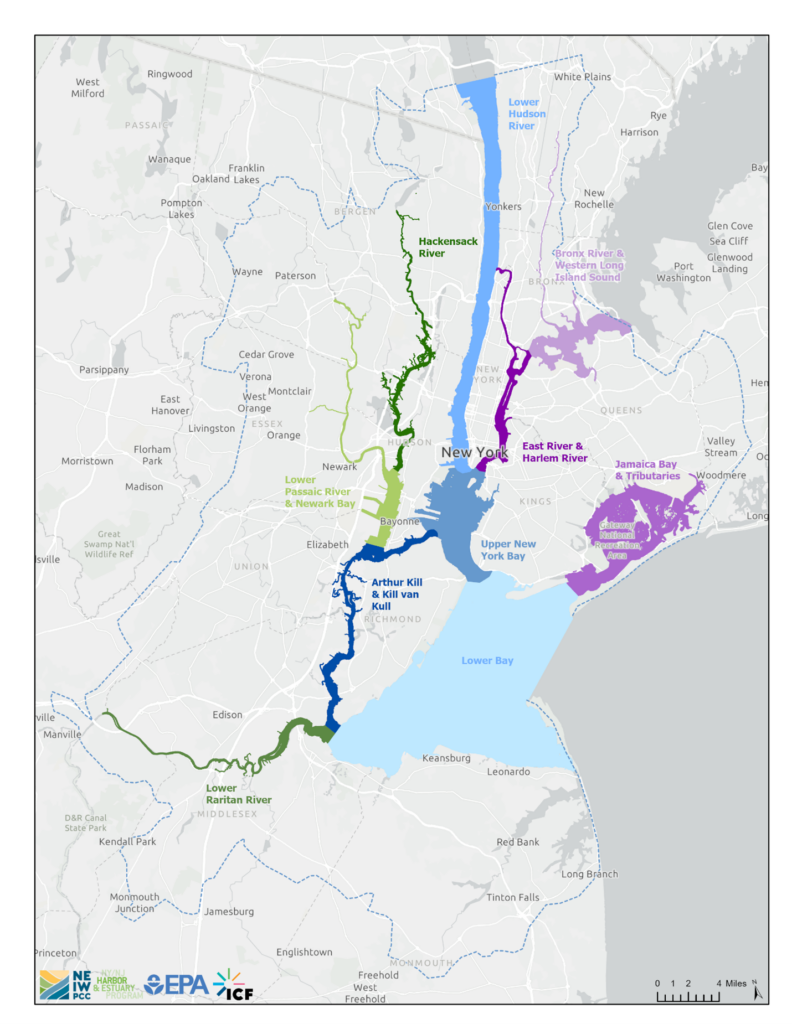The New York-New Jersey Harbor & Estuary Program (HEP) and NEIWPCC released the first-ever attempt to calculate the economic value of clean water in the New York-New Jersey Harbor Estuary. The report, which was completed by management consulting company ICF and NEIWPCC, and funded by the U.S. Environmental Protection Agency (EPA), suggests that even relatively modest improvements to water quality can yield significant economic benefits for local households.

“This study shows that investing in water quality and a healthy ecosystem is beneficial for the well-being of millions of people who live, work, and enjoy the outdoors in this region,” said EPA Regional Administrator Lisa F. Garcia. “Improving water quality to the extent where it could support recreation and aquatic species is worth up to $1.4 billion dollars annually to local households. The returns on these investments are tangible and make a real difference.”
ICF’s economists evaluated four different scenarios for improved water quality: one in which the water would be suitable for boating, paddling, and wading safely in the water (secondary contact recreation); one in which the water would be suitable for swimming safely in the water (primary contact recreation); one in which the water would allow for healthy fish and ecosystems (aquatic life); and one that includes all of the above. The team then estimated the value of those improvements to households in 30 counties that are covered by the Harbor & Estuary Program. The results show that even relatively modest water quality improvements, such as those that would achieve water safe for paddling and boating, are valued by households, implicitly accounting for benefits like increased property values, decreased health risks from water contact, and improved appearance and smell.
Prior to this study, no economic valuation studies have been conducted for the waters in the Harbor Estuary. The lack of economic literature for the Harbor Estuary region to date makes this economic analysis valuable for raising awareness of the value that clean water in the Harbor Estuary provides. This study can also be used as a steppingstone for additional work to identify specific components of the economic value related to water quality improvements in the Harbor Estuary – for example related to specific types of activities or as realized by particular groups.
“This work provides a real and substantial indication of the high value a clean and healthy estuary has for New York and New Jersey residents” said Robert Pirani, director of the New York – New Jersey Harbor & Estuary Program at the Hudson River Foundation. “We anticipate this important effort will help spur additional research on the many other economic benefits and ecosystem services that flow from our waterways.”
“NEIWPCC is happy to have supported HEP in the development of this first ever estimate of the economic value that clean water brings to the watershed. The high value that households place on clean water in the region plays into our goals to preserve and advance water quality across the Northeast,” said Susan J. Sullivan, executive director of NEIWPCC.
The Hudson River Foundation and HEP will host a presentation and discussion on September 21, featuring the study’s authors, Jessica Balukas of ICF and Robert Johnston of Clark University. They will discuss the methodology of the study and how this work can be used to inspire other economic valuations of water and environmental improvement in the estuary. The seminar is virtual and free to attend. Please register here.
To learn more, view the entire report, as well as an executive summary and data graphics.